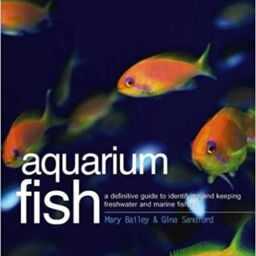The Rosy Barb, Puntius conchonius, is a very easy fish to keep. Sometimes the Common Name is spelt Rosey Barb. Barbus Conchonius is a junior synonym of the scientific name. It comes from Assam and Bengal in the Indian Sub Continent. In the wild it can grow to about 6 inches (16cm) long, but in an aquarium does not generally get longer than about 4 inches (10cm).
Water Conditions
The Rosy Barb is very flexible in its requirements. A pH of between 6.5 and 7.5 suits this fish. Although it will survive slightly acid water, it seems to prefer slightly alkaline water.
It is not too bothered by water hardness, but seems to like some hardness in the water.
It can take temperatures of between 10 degrees C (50 degrees F) and 32 degrees C (90 degrees F). I would not recommend the extremes of its range, but I have heard of cases where it has been successfully kept as a pond fish in Adelaide even in the winter which suggests it can take even lower temperatures than 10 degrees C (50 degrees F). This is one of the fish that is happy in ether tropical or cold water aquariums as long as the conditions are not too extreme.
Food
This fish is extremely easy to feed. It will eat practically all types of fish food. It is an omnivore and will eat soft boiled spinach as well as flake, pelleted, live and frozen foods. In a mixed tank watch the fish to make sure the Rosy Barbs are not getting all the food. They eat a lot. Make sure you do not pollute the aquarium by putting more food than the aquarium and its filter can handle.
A good live food for Rosy Barbs is Daphnia.
Companions
The Rosy Barb is a schooling fish and at least 6 are to be preferred. In a school they are much less likely to be a problem to other fish. It is a bigger fish than many of its common companions as well as being extremely active; naturally it can sometimes cause problems.
Some suitable companions are: ParaguayTetras, PristellaTetras, Buenos Aires Tetras, Colombian Tetras, Rummy Nose Tetras, Harlequin Rasboras, Scissortail Rasboras, Lemon Tetras, Black Widow Tetras, Emperor Tetras, Head and Tail Light Tetras, Glass Bloodfin Tetras, Swordtails, Platies, Mollies, Zebra Danios, Glowlight Tetras, and White Cloud Mountain Minnows, as well as the Corydoras catfish like the Peppered Catfish.
Some fish I would definitely not recommend as companions for this fish are: Siamese Fighting Fish, Guppies and Endlers Guppies.
Some small Fish like Neon Tetras and Cardinal Tetras may be all right while the Rosy Barbs are small, but whatever sort of fish you put together, you need to be guided by the sizes on the individuals as well as the species.
Varieties
There are several varieties of Rosy Barb including the Neon Rosy Barb, the Long Fin Rosy Barb, Red Glass Rosy Barb, the Blushing Rosy Barb, and the Gold Neon Rosy Barb.
Breeding
The Rosy Barb is one of the fish that frequently lays eggs in a home aquarium without their owner ever being aware of it. The eggs will normally get eaten long before they hatch, and any that do hatch get eaten as tiny babies with their owner never even seeing them.
Male Rosy Barbs have the reddish color that gives the species its common name while the females are more a yellowish color.
Frequently, hobbyists trying to breed them will use trios of two males and one female. The fish need to be well conditioned with rich food beforehand. This is particularly easy to do with this species because they are such good eaters. I find that frozen blood worms are a good food.
The breeding tank should have plenty of plants; both submerged and floating ones. Neutral pH is probably best. The trio is often put into the breeding tank when it is getting dark and will spawn the following morning, or the second morning. When they have spawned, the female should be noticeably thinner, and the parents should be removed. Each female will lay hundreds of eggs.
The eggs hatch in 24-48 hours. The babies are fairly small. At first they will eat infusoria or the finest fry foods, but they grow quickly and will soon be able to eat bigger food like screened Daphnia.
Professional breeders will sometimes simply let their Rosy Barbs breed naturally in ponds.
Once, to confirm my observation that my rosy barbs were frequently spawning without any special stimulus being given, I put a few Rosy Barbs into a type of breeding trap with a perforated bottom so that any eggs laid would fall though and hatch in the aquarium. I got a number of babies this way.
Growing the Babies
Baby Rosy barbs are vigorous fish. They eat well and can grow very fast, but it is necessary to give them enough space and keep the water quality high. I suggest more partial water changes than are usually done.
They will be able to eat screened Daphnia quite quickly. The definitely benefit from Daphnia and other suitable sized live food.
Feeder Fish
The Rosy barb is one of the many fish sometimes used as feeder fish. From the point of view of people selling them they have some advantages for this. They are easy to breed, easy to grow, and the males sell better than the females, so if they can separate many of the males early on they can get something for the young females.
Personally, I think that feeder fish are often used when it is not necessary, although I recognize that there are cases where there is little alternative. In our shop, we do not sell any fish designated as feeder fish, but I am well aware that some of the small Rosy Barbs we sell cheaply are fed to other things.
Pest Fish
The Rosy Barb certainly has the potential to cause great damage to fragile ecosystems. With any pet fish, it should never be put into a situation where it can escape into natural waterways. They should never be released, and not used for live bait. The plants from a pond with fish in it also should not be put into natural waterways. Twice in setting up a new pond, baby fish have appeared. My theory is that fish eggs were on the plants put into the ponds.
AUTOPOST by BEDEWY VISIT GAHZLY




